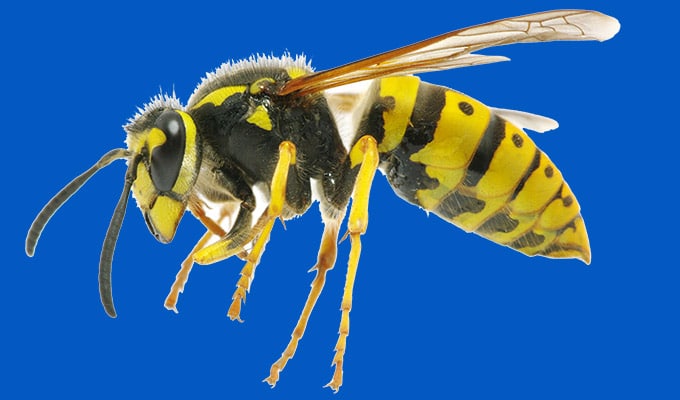Sign up for Newsletter
Signup for our newsletter to get notified about sales and new products.

Wasps can be up to 20mm in length. The common wasp has a yellow head with a black top, a black thorax with yellow on its sides, a yellow abdomen with black bands, black antennae, and yellow legs. They have two pairs of membranous wings, the hind wings smaller than the forewings and linked to them by a row of hooks.
In spring the over-wintering queen wasps leave their hibernating quarters to seek nesting sites which could be a hole in the ground, a hollow tree or artificial structures such as eaves, lofts and garden sheds etc. The queen starts to build her nest with a papery material that she makes by chewing small pieces of wood mixed with saliva; this is known as wasp paper. She will raise the first few workers by her own efforts and those workers will then commence the enlargement of the nest and caring for the immature wasps to follow.
Nest construction starts in earnest in early spring when over-wintering Queens emerge from shelter to start building and will reach its maximum size in September, when 5,000 to 10,000 workers may be present. These workers will forage for food up to 400 meters from the nest.
The size of wasp colonies will vary from year to year; the severity of the previous winter is probably the key factor. In the autumn the young queens mate and leave the nest to hibernate, the rest of the nest dies out and the nest is never used again. Common signs of having a wasp’s nest are seeing large numbers entering / leaving or congregating around holes in air-bricks or around guttering / pipe entry / exit points
Can be achieved by destruction of the nest or by attractants in external dining areas and gardens; flying insect control systems or proofing. Destruction involves using specialist equipment for safety, and infecting insecticide at high pressure into the nest.
Call our helpline for advice and a free no obligation quote for treatment and removal of nests.